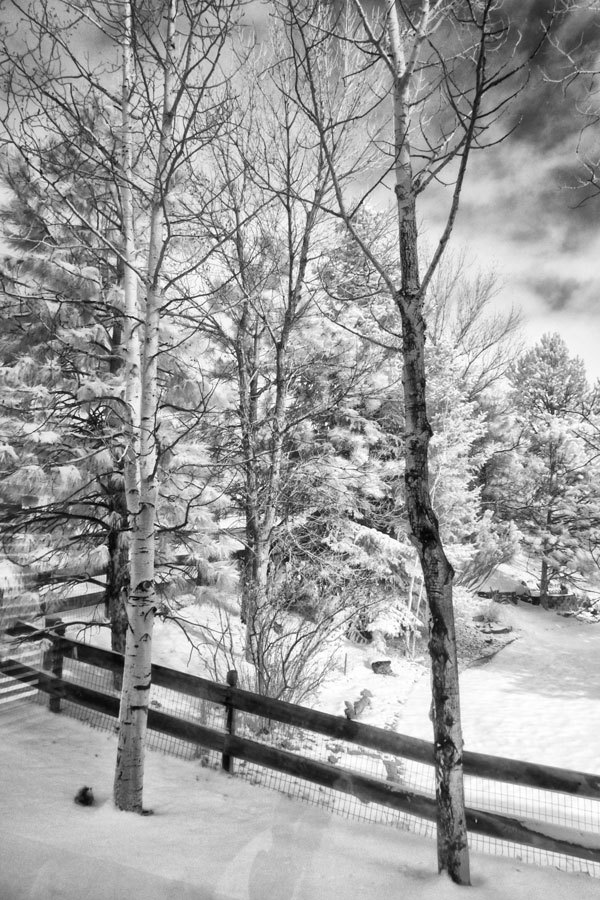Today’s Post by Joe Farace
“If winter comes, can spring be far behind?” ―
 OK, maybe was an optimist because I’m writing this post as I watch the snow falling here—on Saturday—here on Daisy Hill for yet another one of the many snowstorms we’ve experienced since the Holidays.
OK, maybe was an optimist because I’m writing this post as I watch the snow falling here—on Saturday—here on Daisy Hill for yet another one of the many snowstorms we’ve experienced since the Holidays.
Infrared in the Winter
In traditional infrared photography, the Wood Effect produces the bright to white reproduction of the chlorophyll layer that are found in deciduous plants. Even non-deciduous plants and trees, like pine trees, can show some of this effect. To my mind, digital infrared capture works perfectly well even with the snow on the ground.
How I made this photograph: Continuing a theme that I began with a post entitled “What Inspires Your Photography,” I’ve been making digital infrared images during winter when the only leaves on the trees are on evergreens, like those Ponderosa Pines in the far background of these leafless aspens. And yes, evergreens do not respond to infrared photography as dramatically as deciduous trees but my experience has show that there is always some kind of response.
Today’s featured image was shot literally in my own backyard with a Panasonic Lumix G6 that had been converted to infrared-only capture by LifePixel using their Enhanced Color IR (665nm) filter with a Lumix G Vario 12-32mm f/3.5-5.6 ASPH kit lens. Exposure was 1/40 sec at f/16 and ISO 400. The RAW file was converted to monochrome using Silver Efex and enhanced using the Glamour Glow filter in Color Efex for an even more wintry look.
If you would like to experience some of the same thrill of discovery that occurred during the first phase of your personal photographic education, my advice is never stop exploring. Try some new things. Maybe it’s infrared photography but whatever you do this year you might want to try something that’s outside your comfort zone.
